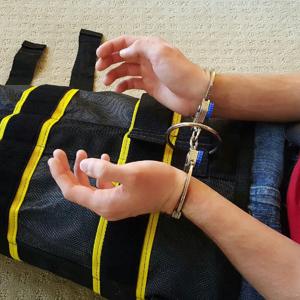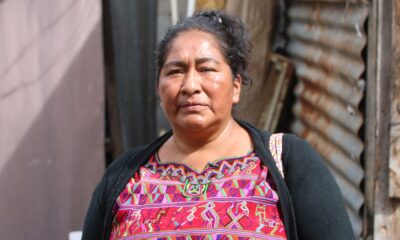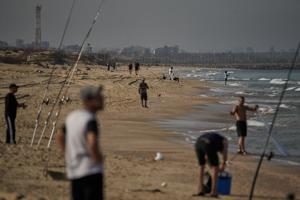Politics
ICE’s Controversial Use of Full-Body Restraint Device WRAP Under Scrutiny

The use of a full-body restraint device known as the WRAP by the U.S. Immigration and Customs Enforcement (ICE) has drawn significant public attention and concern. This device, which is a custom version manufactured by Safe Restraints, is employed during deportations, raising questions about its application and the treatment of individuals in ICE custody. Recent protests surrounding the device have intensified following incidents involving law enforcement in various cities.
On October 4, 2025, demonstrations erupted in the Brighton Park neighborhood of Chicago after U.S. Border Patrol officers shot a woman on the Southwest Side. Protestors gathered to voice their outrage, with many expressing their concerns about the use of the WRAP in deportation scenarios. Eyewitness accounts describe federal officers employing the restraint device amid escalating tensions during the protests.
In Portland, Oregon, similar protests took place on October 5, 2025, where demonstrators confronted ICE officers outside their facility. Activists expressed their opposition to the WRAP and the broader implications of immigration enforcement practices. The protests also coincided with heightened scrutiny of the National Guard’s deployment in response to civil unrest, reflecting a growing discontent with federal actions.
In Memphis, Tennessee, community members organized marches against the deployment of National Guard troops to the area. These protests, which occurred on September 27, 2025, featured a diverse group of activists, including notable figures like Rachael Spriggs. This wave of protests has highlighted the connection between immigration enforcement and broader civil rights issues, with many advocating for policy reforms.
Critics of ICE’s use of the WRAP device argue that it poses a significant risk to the safety and dignity of individuals subjected to it. Legal advocates have raised concerns about the potential for physical harm and psychological trauma associated with such restraints. The device’s design, intended for security and control, has been described as dehumanizing by many who have witnessed its use.
As the protests continue to unfold, the conversation surrounding the WRAP device and ICE’s practices is expected to intensify. Activists are calling for transparency and accountability, urging lawmakers to reconsider the ethical implications of using such restraints during deportations. The situation remains fluid, with public sentiment increasingly critical of policies that impact immigrant communities and their treatment by federal authorities.
The ongoing demonstrations reflect a broader movement advocating for immigrant rights and civil liberties, emphasizing the need for a more humane approach to immigration enforcement. As events develop, the focus will remain on the actions of ICE and the implications for those affected by their policies.
-

 World5 days ago
World5 days agoExposing the Reality Behind Guatemala’s Garment Industry
-

 Politics5 days ago
Politics5 days agoLB Pharmaceuticals Quiet Period Ends October 21, Analysts Weigh In
-

 World5 days ago
World5 days agoHamas to Return Remains of Additional Hostage on Friday
-

 Business5 days ago
Business5 days agoRoyal Bank of Canada Upgrades Ovintiv to Outperform Rating
-

 Sports5 days ago
Sports5 days agoSaquon Barkley Reflects on James Franklin’s Dismissal from Penn State
-

 Lifestyle5 days ago
Lifestyle5 days agoSouth Los Angeles Intersection Renamed to Honor Activist Danny Bakewell Sr.
-

 Entertainment5 days ago
Entertainment5 days agoSylvester Stallone’s ‘Alarum’ Surges in Streaming Despite Poor Reviews
-

 Health5 days ago
Health5 days agoFDA Announces First Nine Recipients of National Priority Vouchers
-

 Science5 days ago
Science5 days agoMIT Develops 3D Brain Models from Patient Cells for Custom Therapies
-

 Entertainment5 days ago
Entertainment5 days agoOlivia Nuzzi’s Memoir Set to Uncover RFK Jr.’s Controversial Texts
-

 Lifestyle3 days ago
Lifestyle3 days agoHistorian Seeks Help to Uncover Cherry Street’s Past
-

 Science3 days ago
Science3 days agoYale School of the Environment Launches Accelerated Master’s Programs









